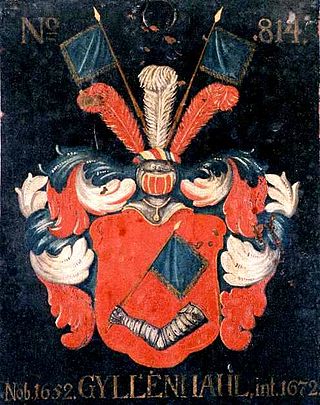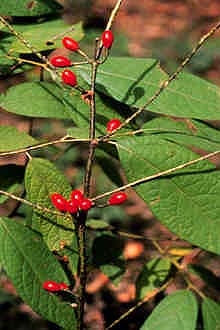
Carl Peter Thunberg, also known as Karl Peter von Thunberg, Carl Pehr Thunberg, or Carl Per Thunberg, was a Swedish naturalist and an "apostle" of Carl Linnaeus. After studying under Linnaeus at Uppsala University, he spent seven years travelling in southern Italy and Asia, collecting and describing people and animals new to European science, and observing local cultures. He has been called "the father of South African botany", "pioneer of Occidental Medicine in Japan", and the "Japanese Linnaeus".

Erik Knutsson, sometimes known as Eric X, was King of Sweden between 1208 and 1216. Also known as Erik the Survivor, he was, at his accession to the throne, the only remaining son of King Knut Eriksson and his queen, whose name may have been Cecilia.

Johan Gadolin was a Finnish chemist, physicist and mineralogist. Gadolin discovered a "new earth" containing the first rare-earth compound yttrium, which was later determined to be a chemical element. He is also considered the founder of Finnish chemistry research, as the second holder of the Chair of Chemistry at the Royal Academy of Turku. Gadolin was ennobled for his achievements and awarded the Order of Saint Vladimir and the Order of Saint Anna.

The Gyllenhaal family is a Swedish noble family descended from cavalry officer Lieutenant Nils Gunnarsson Haal, ennobled in 1652 with a change of name to "Gyllenhaal".

Joachim von Rohr was a lieutenant colonel for the Swedish Empire and Commandant of the Dalarö fortress. He participated in the Battle of Poltava and was captured and held as a prisoner of war in Solikamsk in Russia.

Johan Martin Christian Lange was a prominent Danish botanist.

Lindera is a genus of about 80–100 species of flowering plants in the family Lauraceae, mostly native to eastern Asia but with three species in eastern North America. The species are shrubs and small trees; common names include spicewood, spicebush, and Benjamin bush.

Uplands nation is a student society and one of thirteen nations at Uppsala University. It has traditionally recruited its members from the province of Uppland, which surrounds and includes Uppsala and stretches down south to the northern part of Stockholm. The nation uses an older spelling of the toponym. As of 2006, the nation has about 2,600 members.

Johan Hadorph was a Swedish director-general of the Central Board of National Antiquities.
Gerard Langbaine, the elder was an English academic and clergyman, known as a scholar, royalist, and Provost of Queen's College, Oxford during the siege of the city.

Hovdala Castle is a castle in Hässleholm Municipality, Scania, in southern Sweden. Its oldest visible parts date from the early 16th century although the original construction dates back to at least the early 12th century.

David Krafft, from 1719 David von Krafft, was a German-Swedish painter, the nephew and student of David Klöcker Ehrenstrahl and his successor as painter to the Swedish Royal Court.

Joachim Cronman was an owner of estates in Livonia and a colonel for the Swedish Empire. He was the Commandant of the Neumünde redoubt/fortlet.

Johan Theodor Holmskiold was a Danish noble, botanist, courtier and administrator. He was noted for his scientific work with fungi and development of the Charlottenborg Botanical Garden. His career included work as director of the Danish Postal Services and the Royal Porcelain Factory.

Johannes Palmberg (c.1640–1691) was a Swedish botanist, physician, and priest. He published the early Swedish textbook in botany, ’'Serta Florea Svecana'’ or ’'Swenske Örtekrantz'’, a Flora with alphabetically arranged pictures of the 150 most common trees and herbs together with descriptions of their use for medical purposes.

Christian Franz Paullini was a German physician, theologian, and writer.
Caro Benigno Massalongo was an Italian botanist who specialized in the field of liverworts. He was the son of paleontologist Abramo Bartolommeo Massalongo (1824-1860).

Per Magnus Johansson is a Swedish psychoanalyst, psychotherapist and historian of ideas. Through his research on the history of psychoanalysis in Sweden, Johansson has contributed to the understanding of the heritage of Sigmund Freud and the psychoanalytical movement in the 20th century. Johansson's psychoanalytical training took place in Paris, where he completed a training analysis with Pierre Legendre. On Pierre Legendres passing in March 2023, Johansson published an obituary in French, Italian and Swedish describing Legendres contributions to the Freudian legacy.

Greta Tintin Eleonora Ernman Thunberg is a Swedish environmental activist known for challenging world leaders to take immediate action to mitigate the effects of human-caused climate change.
Heinrich Julius Lebeck was a Ceylon-born Dutch naturalist and specimen collector. He was educated in southern India, at a school run by Christoph Samuel John and later became a student of Carl Peter Thunberg. He described the Gangetic dolphin and the plant genus Lebeckia and the fish Ichthyscopus lebeck were named after him.

















